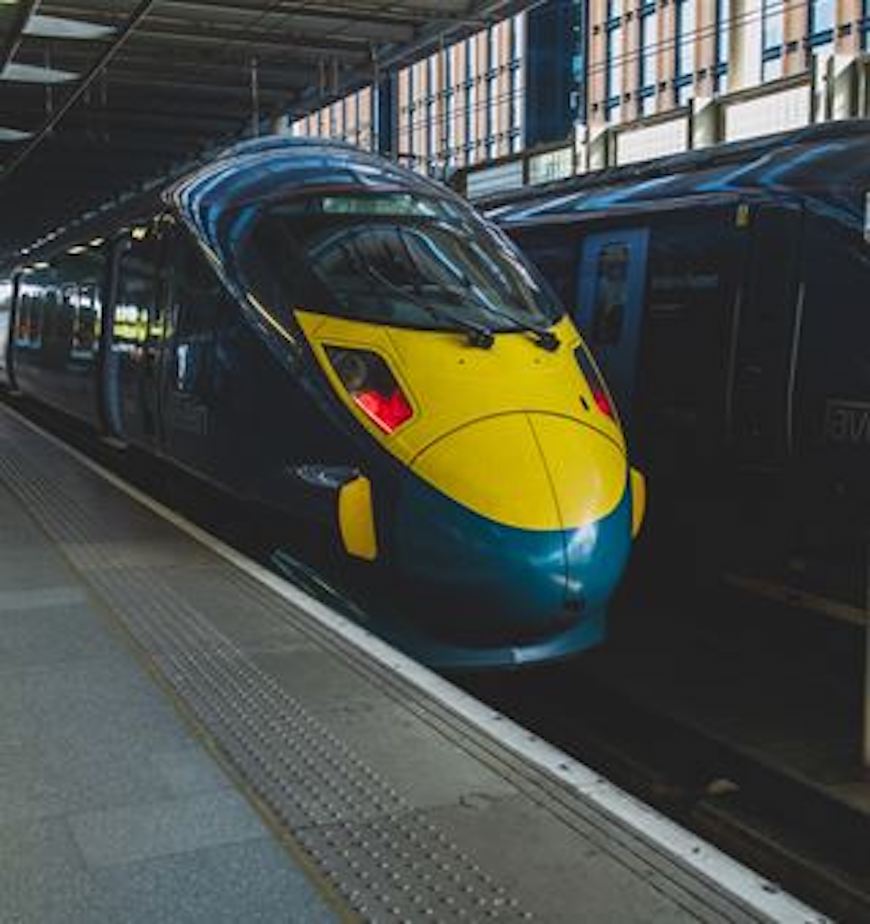Direct Rail Link between London and Bordeaux Closer than Ever

The Chairman of HS1 Ltd, Keith Ludeman, met with Alain Rousset, President of the New Aquitaine Region, and Nicolas Florian, Vice President of Bordeaux Métropole and Mayor of Bordeaux in April to discuss running direct high-speed rail services between London and Bordeaux by 2022.
HS1 Ltd is now in advanced planning with three other international railway operators along the proposed route. Importantly, the railway operators are developing a pre-planned and agreed timetable as well as train routes. This then means that a train operating company would be able to begin running services in two to three years.
The Current Situation for London-Bordeaux Rail Passengers
Passengers travelling from London to Bordeaux today will get an indirect service with a change in Paris. The total journey time for this trip is 5 hours and 25 minutes. Of this time the wait in Paris is just over an hour.
Passengers travelling in the other direction, however, have a 1 hour 55 minute stop in Paris. This is because Bordeaux does not currently have the capacity to perform passport checks and with the United Kingdom not in Schengen, these must be performed before crossing the border. On the London-Bordeaux trip of course they are performed prior to departure.
The 2022 Vision for a Direct Rail Link between London and Bordeaux
One of the key features that needs to be put in place is for Bordeaux to be able to perform passport checks. This would then allow Paris to be bypassed, cutting down both the hassle for passengers of having to change trains and reducing travel times overall.
One recent key infrastructure development that will enable the London-Bordeaux high-speed direct service is the opening of the new LGV SEA (Ligne à Grande Vitesse Sud Europe Atlantique), the new high-speed line between Bordeaux and Tours. It entered service on 2 July 2017.
The four railway operators along the proposed route, HS1 Ltd, Lisea, Eurotunnel and SNCF Réseau, met in Bordeaux to discuss developing Gare de Bordeaux-Saint-Jean to facilitate international departures.
The Key Rail Infrastructure Stakeholders
HS1 Ltd: HS1 Ltd owns and manages the high-speed rail line between London St Pancras and the Channel Tunnel.
LISEA: privately owned consortium that provided more than 50 percent of the funds for the LGV SEA. It is responsible for managing the asset until 2061.
SNCF Réseau: state-run French railway infrastructure manager, which looks after the rail infrastructure serviced by SNCF.
Getlink (Eurotunnel): Getlink manages and operates the Channel Tunnel between England and France.
Keith Ludeman said:
“A cross-channel train can carry almost a thousand people. The TGV is 90% less polluting than an air link. Imagine what this link, every two or three days, can do for tourism in Bordeaux and this beautiful region. France continues to be the second largest holiday destination for the British and they spend 4.5 billion euros a year. Bordeaux could conquer a larger part of this market by becoming the first city in 25 years to be equipped with a new cross-channel rail terminal. “
Alain Rousset said:
“This is a meaningful project for the economic and tourist development of our region. Obviously, this is a project that I will support.”
Nicolas Florian said:
“Placing Bordeaux less than 5 hours from London can be a chance for Bordeaux. It’s a project that I will support as it will help strengthen the economic and tourist attractiveness of our territory on a European scale.”
Benefits of a Direct Rail Link between London and Bordeaux
Creating the infrastructure to allow passengers to make a more comparable choice between flying and travelling by rail between the two cities will benefit the environment. Train travel is of course much more environmentally friendly than flying.
It will also benefit passengers who won’t face the same luggage restrictions as they do with airlines. Furthermore, rail terminals are located much more centrally within cities, avoiding the additional travel time from an airport into a city. There are many passengers who would welcome a rail option but for whom the additional travel time has made it unviable.
High-speed international trains would travel at up to 320km/h between the two cities.
Dyan Crowther, Chief Executive of HS1 Ltd, said:
“As we’ve seen with the recent introduction of the Eurostar London-Amsterdam service, there’s a real demand for international train services to provide a comfortable and better-connected service, especially for leisure journeys.
“This is the first time that railway operators have collaborated in this way and saves the train operator having to do a lot of legwork. The route is almost ready for a train operator to turn up and turn the key as soon as the UK and French Governments agree on border controls. With the right commitment, we could be looking at new services in the next couple of years. The service will take passengers direct from city centre to city centre, taking the hassle out of travel to South West France.”

